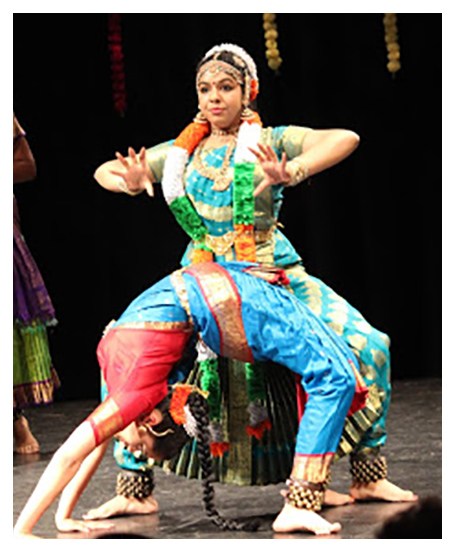According to the legend, bharatanatyam has first been danced by the Lord Shiva himself. He taught it to his goddess wife and she transferred this art further to the human.
In the Indian classical dance the body is used as an instrument for changing oneself and the universe. The body becomes a means of communication with the God. The dance choreography, techniques, symbols and structures have been described in such ancient writings as Natyashastra and Abhinaya Darpana.
This is a rhythmic and dynamic dance. Bharatanatyam is called the rhythmic side of yoga: when you dance the fingers form different mudras – hand gestures – which follow one after another depending on the dance figure or subject. This unique hand position scheme has been described in the most significant ancient scrolls, which are devoted to the stage art. This system constitutes the “alphabet” of all the dance schools. The main body positions are balanced grounded positions with arms on the hips or stretched.
Thus, bharatanatyam is very beneficial for health. It improves concentration, coordination and stamina. It gives you strength and beauty, teaches you to alter between slowness and swiftness, to express your feelings through hand, face and body movements (pantomime). It develops a good sense for the rhythm.
Bharatanatyam is very much recommended for the children as it helps them to develop tactfulness, good coordination, good physics and musicality as well as contributes positively to their intellectual development as the children learn more about a new culture and mythology.


